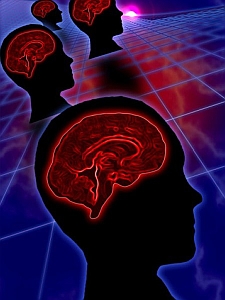Psychologists at Carnegie Mellon University in Pittsburgh and University of Washington in Seattle developed neural imaging methods to understand the way human brains adapt to injury. The team led by Carnegie Mellon’s Marcel Just, director of the university’s Center for Cognitive Brain Imaging, published its findings online this week in the journal Cerebral Cortex.
The researchers that include Washington’s Chantel Prat and Carnegie Mellon’s Robert Mason investigated how the human brain adapts to various traumas, such as traumatic brain injury and stroke, thus enabling people to continue functioning after areas of the brain may have been damaged. The team studied 16 healthy adults with functional magnetic resonance imaging to simulate a temporary incapacitation of the Wernicke area, the region of the brain involved in language comprehension.
Functional MRIs measure brain activity by detecting the changes in blood oxygenation and flow that occur in response to neural activity. In their study, the participants were asked to perform a sentence comprehension task, during which a technique called transcranial magnetic stimulation temporarily disabled the Wernicke area in their brains. Functional MRIs were taken of the participants’ brains before during and after the application of transcranial magnetic stimulation.
The results indicate brain functions in the Wernicke area decreased following the transcranial magnetic stimulation, but other brain areas immediately became activated and coordinated in response. These back-up brain areas allow the individual’s thought processes to continue with no decrease in comprehension performance. That “reserve team” comes from three types of brain regions: (1) contralateral areas that are in the mirror-image location of the brain, (2) brain regions adjacent to the impaired area, and (3) a frontal executive area.
“The first two types of back-up areas have similar brain capabilities as the impaired Wernicke area, although they are less efficient at the capability,” says Just. “The third area plays a strategic role as in responding to the initial impairment and recruiting back-up areas with similar capabilities.”
Despite the ability to call on other areas of the brain to fill in for the damaged regions, the damage still takes its toll on functions throughout the brain. “When a key node of a network is impaired, the network that is closely collaborating with the impaired node is also impaired,” Just notes. “People do their thinking with groups of brain areas, not with single brain areas.”
The findings nonetheless provide an imaging technique for tracking the course of brain injuries, as well as pointing to a recovery strategy for brain injury patients. “The secret is to develop alternative thinking styles, the way a switch-hitter develops alternative batting styles,” explains Just. “Then, if a muscle in one arm is injured, they can use the batting style that relies more on the uninjured arm.”
Read more:
- MRI Helps Screen Alzheimer’s, Brain Degeneration Dementia
- Dual-Purpose Medical Imaging Contrast Agent Developed
- Non-Invasive Technique Developed to Measure Brain Pressure
- Efficient, Economical Brain Imaging System in Development
- Mayo Clinic, GE to Research Brain-Scan MRI Technology
* * *


 RSS - Posts
RSS - Posts
[…] Imaging Technique Identifies Brain Adaptive Functions […]